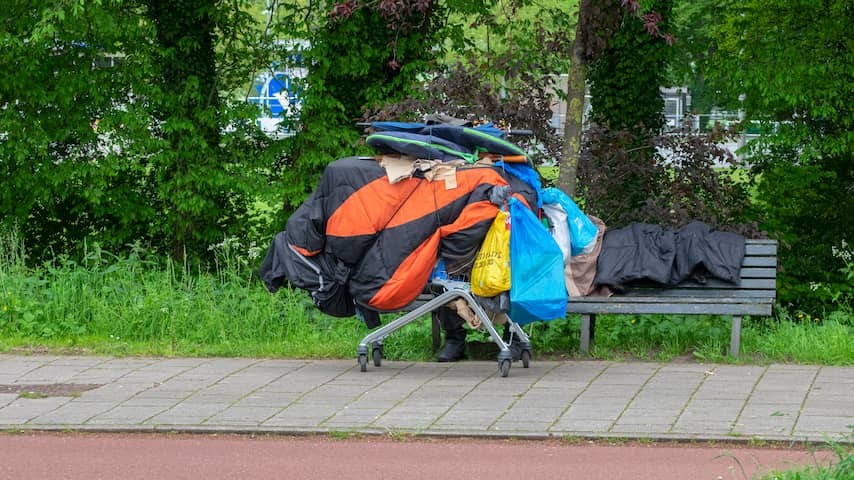
The Amsterdam and The Hague regions have over twenty thousand homeless people. More than 1 percent of the cities’ population does not have adequate housing. It increasingly involves women and children.
This is according to a new count by the European Typology of Homelessness and Housing Exclusion (EHTOS) by Hogeschool Utrecht and Kansfonds. Many homeless people in Amsterdam and The Hague live on the streets, while homeless people in other cities often sleep with acquaintances.
In the Amsterdam-Amstelland region, ETHOS counted 13,070 homeless people, including 1,718 children. In the municipality, 1,353 people live on the streets. The Hague region has 7,201 homeless people, including 1,112 minors. Of them, 500 people live on the streets.
“We were shocked by the outcomes of the ETHOS count, but not surprised,” says alderman Rutger Groot Wassink of Amsterdam. He therefore calls on the cabinet to work on a “distribution law for the reception of homeless families.”
Most don’t live on the streets
ETHOS counted a total of 28,721 homeless people in nine regions: Amsterdam-Amstelland, The Hague, Noordkop, Eindhoven, IJssel-Vecht, Maastricht-Heuvelland, Maassluis-Vlaardingen-Schiedam, Valleiregio and Zaanstreek. The count included 15,012 men, 7,590 women and 4,062 children.
The third round of counting by Hogeschool Utrecht and Kansfonds confirms that the group of homeless people is very diverse. It’s not just adult men, but increasingly women and children as well.
Most adults do not stay on the streets, but with family or friends (31 percent). And a smaller part, 18 percent, stays in spaces such as a car, shed or mobile home.
The Salvation Army points out that the figures are much higher than those of statistics bureau CBS. The organization says that the Netherlands is in a “crisis situation.” The results therefore do not come as a surprise, says chairman Harm Slomp. “We have regularly indicated what we see: overcrowded social shelters, no flow-through options, many people on the streets and, as a result of a shortage of suitable housing, less prospect of recovery for homeless people.”